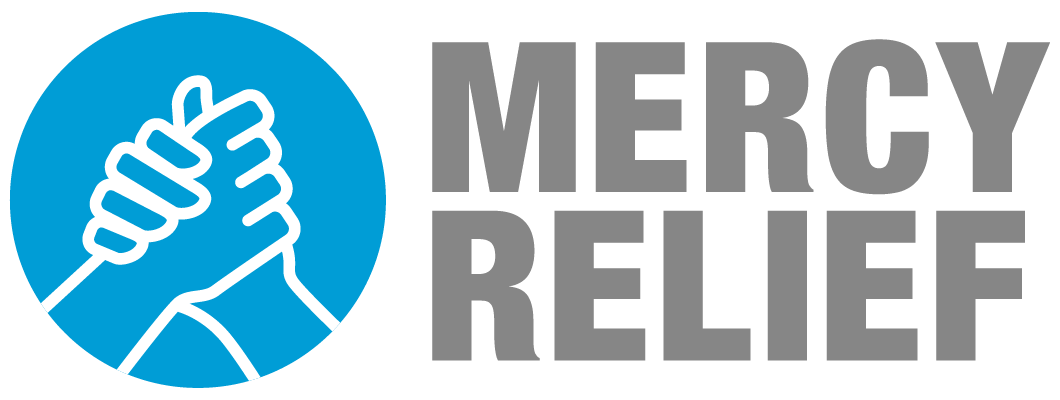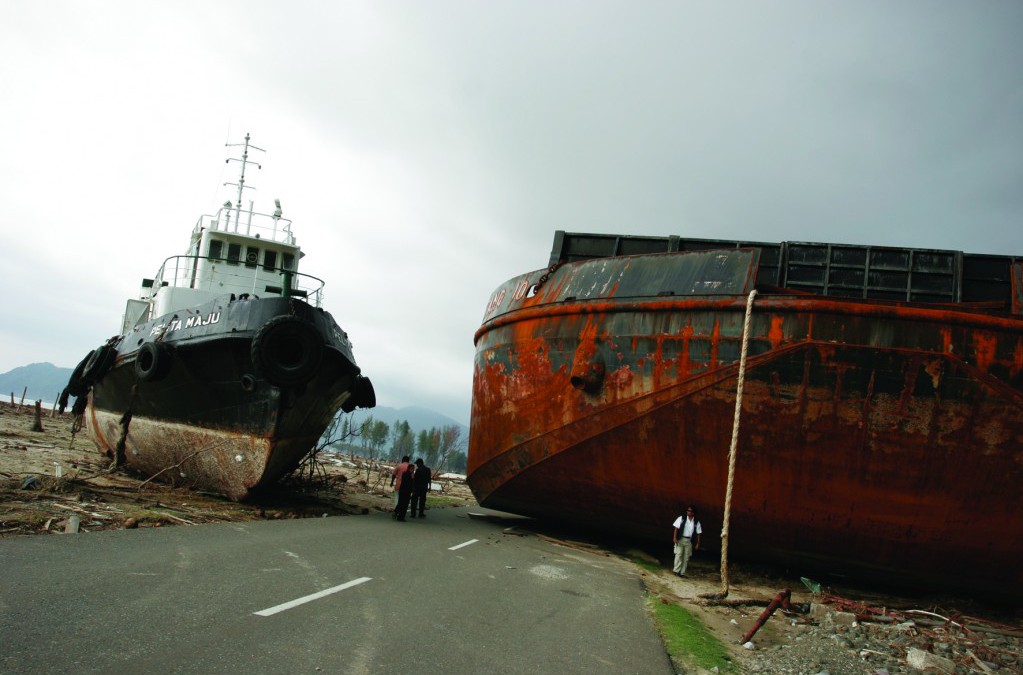Exactly 5 years ago, at 8.58 am (GMT +8), an undersea quake resulted in the loss of 250,000 lives with millions others homeless in Asia. At the same time today on 26th December 2009, let’s unite for a minute in silent remembrance of those affected, and wish for greater peace, safety and harmony for humanity.
“We do not have to know the victims to know the anguish of man who has lost his wife, a mother who has lost her son, a child who is orphaned or a family still searching for missing members, hoping against hope that they will be safe. We all have our own families, and we know what our families mean to us.” Prime Minister Lee Hsien Loong
Within days after the tsunami wiped out the shores of Asia, Mercy Relief sent preliminary assessment teams to Sri Lanka and Aceh. There they delivered medical supplies and distributed food and water. During this early phase, MR dispatched relief goods worth more than $530,000 comprising inter alia medicines, water food, surgical gloves and masks, body bags and blankets.
Following this, MR sent 14 able-bodied volunteers to Meulaboh, West Aceh aboard the Republic of Singapore Navy LST RSS Endeavour. This was Mercy Relief’s first collaborations with the Singapore Armed Forces and the Singapore Civil Defence Force to provide humanitarian aid overseas. MR specifically provided 1,600 4-men tents worth S$80,000 during this mission.
In response to the Asian Tsunami, MR sent more than 100 volunteers and over 900 tonnes of relief supplies worth more than $1 million to the devastated areas of Sri Lanka and Indonesia. MR partnered SSA to provide medical care and distributed food and household items to the affected provinces of Sri Lanka. The medical team in Banda Aceh treated 150 survivors daily based at the Secata camp which Mercy Relief took over from the Singapore Armed Forces and where 3,500 internally displaced people are living temporarily. In Meulaboh, the medical team provided services at the A&E dept of Meulaboh General Hospital where SAF medics operated previously.
Besides that, MR also sent 500 tonnes of drinking water to the affected and needy areas. The team bought 10 water treatment units that could process about 100,000 litres of water each day, equivalent to 1.4 million litres over two weeks. These Singapore-made units do not require electricity and are easy to use and maintain. These water filtration systems would ensure longevity of assistance to the beneficiaries whilst they rebuild their lives. In this way, MR was not only fulfilling the original intention of the donors which was to provide drinking water to the victims but also to provide a sustainable source of drinking water to ensure the beneficiaries were effectively served.
Project Playpack
Singapore sent ‘Play Packs’ to children in the region who were rebuilding their lives in the wake of the tsunami. 10,000 playpacks were distributed in Sri Lanka and Indonesia.
Each Play Pack comprised of a reusable back-pack with school essentials such as stationery, and recreational items such as art materials, and simple toys and games. Thus the Play Packs will not only help children go back to school, but also cater to their need to play.
The back packs will be topped off with a personal touch- gift tags hand made by children in Singapore- important role. The children who received the Play Pack saw that the greetings have come from other children thus making the gift more meaningful for them.
This project came about from the realization that one of the main challenges in crisis zones is to restore normalcy to the children’s lives. This includes upholding a child’s “right to play” – a right recognized by Article 31 of the UN convention on the Rights of the Child. The contents were decided by a committee that included volunteers with experience working with children in the affected areas. Dr Cherian George who chaired Project Play Pack’s organizing committee.
To provide coordination in terms of information, projects and logistics during the relief and reconstruction phase, Mercy Relief opened up liaison offices in Medan and in Meulaboh to serve other Singaporean VWOs/NGOs which want to work in Aceh in terms of information, projects and logistics. These offices facilitated the movement of other organizations and volunteers who wished to provide aid or supplies to the affected areas.
After the relief and rehabilitation period ended, MR quickly started on the reconstruction projects that it had committed since the early days. Finally in September 2005, the first tsunami reconstruction project committed by Singapore in Aceh was opened. This was the Muhammadiyah orphanages in Meulaboh and the 50 semi-permanent schools in Nias.
Projects:
Refurbishment of Muhammadiyah School and Orphanages
Mercy Relief’s tsunami reconstruction projects started with the refurbishment of Muhammadiyah School and Orphanages. Designed by renowned local architect Tay Kheng Soon, the Muhammadiyah school will be substantially funded by the Lien Foundation, and orphanages by Singapore Red Cross Tsunami Relief Fund Committee and Commerzbank AG.
The cost of repairing and refurbishing the partiall-destroyed boy’s and girl’s orphanages was estimated at $480,000. The project would ease the cramped living conditions for 60 orphans aged between 13 to 18 years old. Upon completion the Muhammadiyah School have two new wings and two refurbished ones. $300,000 funds were used up covering the costs of furnishing, landscaping, recreational facilities, books and stationeries, uniforms for the students.
Repair and refurbishment works began in April to reinstate and improve the physical infrastructure and the living conditions of the two orphanages. Some 80 children also attend the kindergarten located at the boys’ orphanage which had also undergone extensive renovation.
The crossroads of the Muhammadiyah school and orphanages was named Simpang Temasek or Temasek Junction so that a little piece of Singapore will remain in the heart of Meulaboh.
Provision of 10 Fishing Vessels
To supplement the tsunami socio-economic development programme, Mercy Releif committed to the construction of 10 semi-modern fishing vessels for the Acehnese fishing community who had lost their livelihood in the tsunami.
Mercy Relief partnered PT Pal Indonesia, one of Indonesia’s most established shipbuilders for this project. PT PAL through MR had also committed to providing complimentary boat-building courses to affected communities in Aceh. The initiative hoped to equip the communities with new skills and open new opportunities for the future.
As part of the reconstruction phase of post-tsunami efforts, the new fleet of fishing vessels will expedite the recovery process and greatly boost the economic development of the fishing industry in Aceh. The boats were funded by Panalpina World Transport Pte Ltd, TRFC, Neptune Orient Lines and Mercy Relief. The boats were named by the funders and upon completion presented to the Acehnese cooperatives at the various affected fishing and port towns.
Nias Earthquake response
In March 2005, MR responded when earthquake that occurred off the coast of North Sumatera hit Nias and Simelue Islands. Mercy Relief began the construction of semi-permanent buildings for the schools destroyed or damaged by the 8.7 magnitude earthquake. 50 school structures which were safer and relatively quick to build will provide the students and teachers with the much needed physical infrastructure and a conducive environment to resume their classes. The school units provided some 6,000 students with the much needed shelter to resume their classes in April. Pre-fabricated kit-houses were funded by Cargill Asia Pacific Holdings, Singapore Maritime Officer’s Union and Mercy Relief.
IRO 100 day memorial
Religious leaders from various inter-religious organizations (IRO) leaders from various inter-religious organsiations (IRO) in Singapore attended the 100th Day Memorial Ceremony in remembrance of the victims of the tsunami. The significant religious event will be held in Masjid Banda Raya, the solitary mosque that withstood the force of the tsunami. Singapore’s presence at the ceremony symbolized the goodwill between the two nations and reflected the continued support for the people of Aceh who were rebuilding their lives in the aftermath of the tragedy.
Reconstruction of the Babussalam and Samatiga Boarding Schools
Mercy Relief decided to work on the Babussalam Boarding School which is one of the best schools in Aceh Barat after the school management saw the good work MR had done at the Muhammadiyah School. The school catered to some 420 children, 200 of whom resided on the premises.The Babussalam complex covered both dormitories for the boys and girls spread over seven buildings. The compound also included study centres, recreational halls, water and sanitation facilities. The funders for this project are TRFC, Commezbank AG, Jurong Country Club, the Indonesian Embassy and Caltex Chevron.
The Samatiga Boarding School which had been totally wiped out by the tsunami got new accommodation and education facilities for 75 children living and studying there. The whole complex comprises of the office block, a recreational and prayer hall, dormitories for both boys and girls and the kindergarten block with a playground.The funders for this project are Yum! Restaurant International, Chicago School of Business Alumni Club, MUIS, Eunos CCC and Mercy Relief.
Other tsunami projects
Through MUIS funding, Mercy Relief gave away bursaries to 100 Acehnese university students whose studies had been disrupted after the tsunami. MR worked with the University of North Sumatera (USU) to identify the deserving students who were temporarily placed in the university to resume their studies.
To support the preservation and upgrading of the existing mass grave at Ground Zero, Mercy Relief took on the project at the Mass Burial Cemetery. With the money given by the Indonesian Embassy, a brick-wall structure was built surrounding the cemetery to protect the grave’s conditions.
The experience gained by Mercy Relief for responding to the tsunami relief efforts proved to be an unmistakable lesson to the organization. From a young humanitarian NGO, MR was propelled to act in the capacity liable for bigger and more established aid agencies. Many friendships were forged between our funders, volunteers and partners whose unyielding support has become the backbone to ensure continued growth of the organization. From this disaster on, MR could no longer look back and will continue to fulfill the humanitarian need further.
About Mercy Relief
Mercy Relief is a Singaporean humanitarian organisation which engages in both disaster relief and sustainable development programmes. It was established in 2003 as an independent non-governmental humanitarian charity responding to the human tragedies in Asia. Mercy Relief’s aid programme focuses on providing timely and effective assistance to disaster-stricken communities and has maintained the delivery of emergency aid within 72 hours from the point of appeal for assistance.
In the past 12 years, Mercy Relief has disbursed over S$32 million in aid across 40 disaster relief and 53 sustainable development initiatives. Mercy Relief has impacted an aggregate of 2 million lives in 24 countries and areas, namely Afghanistan, Bangladesh, Cambodia, China, DPR Korea, India, Indonesia, Iran, Iraq, Japan, Laos, Lebanon, Malaysia, the Maldives, Myanmar, Nepal, Pakistan, Palestine, the Philippines, Sri Lanka, Taiwan, Thailand, Vietnam and Yemen.
For more information, you may call us at 6514 6322 or email corporateaffairs@mercyrelief.org



